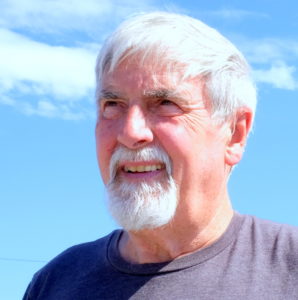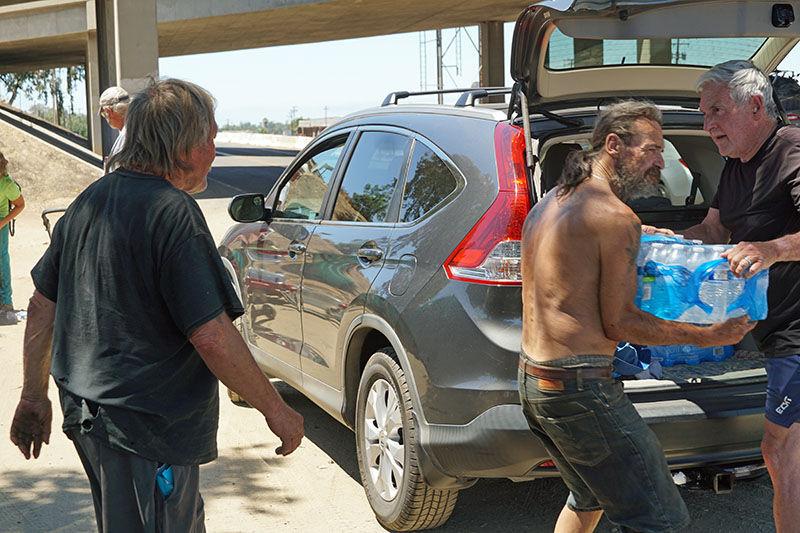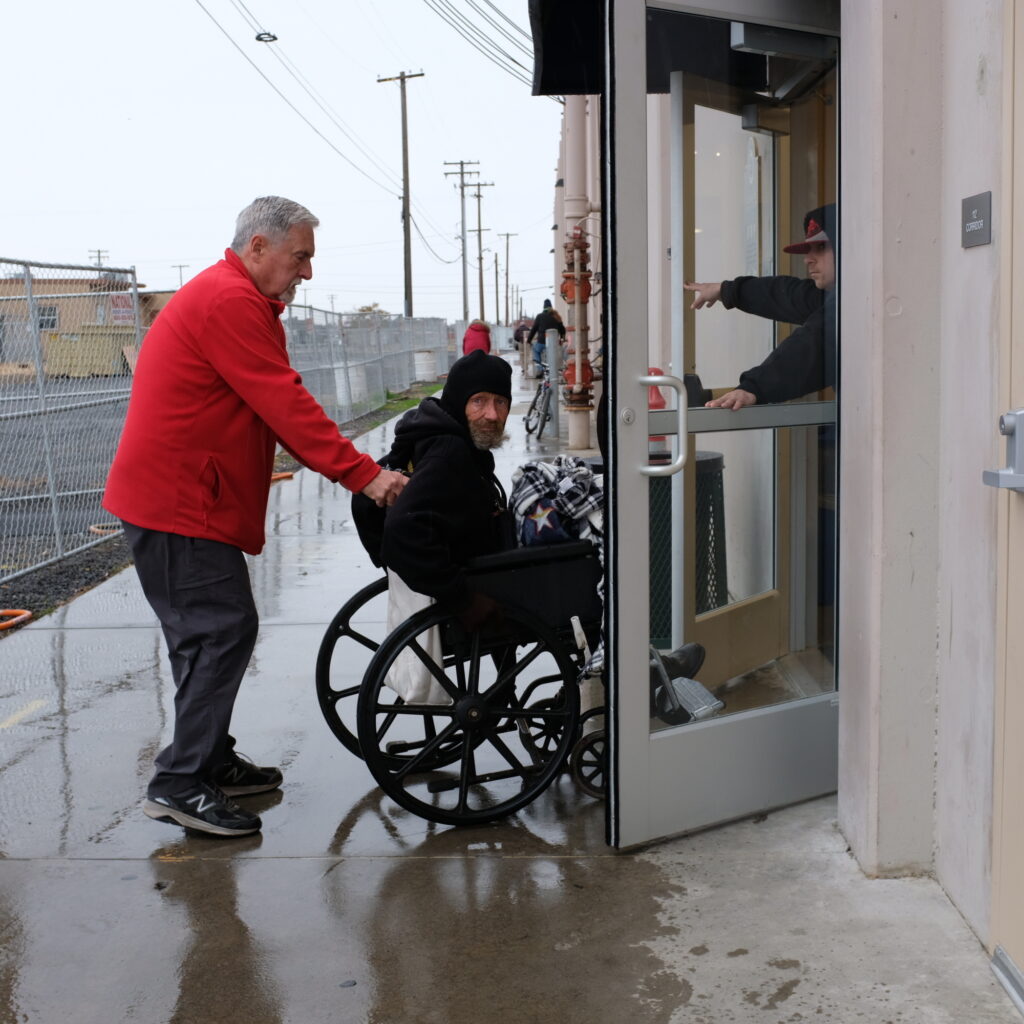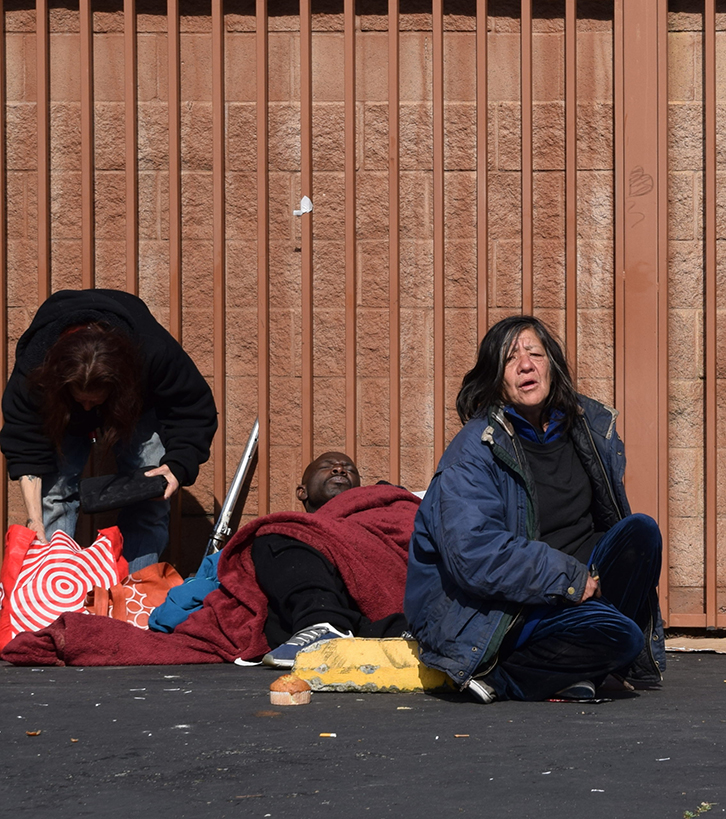
Frank Ploof has served on several committees in Stanislaus County dedicated to homeless and housing issues, and has spent thousands of hours in direct contact with homeless people, trying to help in tangible ways with problems local authorities can’t address. He and Modesto resident Steven Finch are partners in the Stanislaus Homeless Advocacy and Resource Enterprise (SHARE) nonprofit, which is dedicated to serving the urgent needs of people in dire distress in Stanislaus County. Below, Frank reports on current problems trying to address homelessness in Stanislaus County. ed
I’ve been working with homeless people in Stanislaus County for roughly 12 years now and have seen a lot, but nothing like what I’ve seen in the last 6 months or so. Things have gotten much worse in terms of increased numbers and declining services.
We got by for many years with a fairly small and informal data system that was good enough to meet Housing and Urban Development (HUD) requirements to obtain minimal annual funding. Note that even today we lack a truly integrated information system that would provide critical specific data regarding homelessness in Stanislaus County.
Today, each separate agency gets its own funding when it meets funders’ requirements. When the local Homeless Management Information System (HMIS) came along, integration of data was forced by HUD; if your agency got HUD funding then you had to enter data into the HMIS. This for the most part was data HUD needed — not what we need to manage homelessness locally.

I could go on, but the point is that in 2022 we still do not have an integrated anything. We have at least 20 non-profits and government agencies, all doing their own thing and feeding data to a mandated HMIS. We need an integrated system with rich data so we can at least have the information we need to manage homelessness locally.
Right now, we aren’t managing anything
If we can get this capability right, then we can look at optimizing management of the homeless population. Right now, we aren’t managing anything. What we are trying and failing to do is treat broken people who are visible because they have no home. There are many, many more broken people in our communities, but they aren’t visible, so they aren’t a public problem, or —as many would say — a public nuisance.
Collectively, we have learned over the years that the best place to interact and repair (when possible) broken people is when they are in a safe and stable place, thus the idea of Housing First. It’s a fine idea in principle, but fails miserably when there is not enough housing and/or the level of care needed.

People are broken in lots of different ways. Let’s assume we categorize them into discreet groups and provide the appropriate services for each group. We already do this with folks who have mental health issues, so we know how to do it.
It’s crucial to keep at the forefront of our discussion the pressing reality that fellow human beings, members of our community, are even now enduring rain, freezing cold, and lack of the most basic necessities like toilets and running water every day. These people include developmentally disabled individuals like little Sherry Lopez, who has bounced in and out of board and care homes and congregate shelters for years, as well as physically disabled people like Kenneth “Pops” Yarber, who currently spends his wheelchair-bound days and nights in a Modesto Park. Casting sick and disabled people into the dirt like human refuse is inhumane, cruel and barbaric. We are better than this.
Once we have the categories and approximate population for each group, we can then do some realistic planning for services and shelter needs.
Standalone shelter units — not congregate shelters — are a key piece of the system. This will be the most difficult part, but if we take advantage of some of the new CA legislation like SB 9 & 10, add federal and state funding opportunities, and join it all with progressive community planning, we can manage our homeless population humanely and cost-effectively. We should look to factory-built transitional housing options to keep the costs low and response time fast.

An operational model of self-sufficiency could be based on capable folks working at a level to pay enough rent/mortgage to maintain the community, especially if it were a community of low-cost shelter units like Pallet Shelters, Conestoga Huts, or even sturdy tents.
Able community members could work within the community at such things as waste removal and upkeep; others, following the model of Downtown Streets Team, could work outside. At least 20% of the seriously ill, elderly and incapacitated, will not be able to work in any capacity, and we’ll have to subsidize anything beyond what they may get from government assistance.
What should we do now that we have a potential framework to develop an optimized system?
I’d recommend that a systems-oriented and facilitated workshop be held over 2-3 days to hammer out a homeless action plan. The plan would include an estimate of resources needed to execute it and requests to appropriate approval bodies would be expected within 30 days of plan submission. There would be required attendance by key electees and staff for each jurisdiction that had more than 25 homeless in the last Point in Time Count. The goal would be immediate action to get homeless people off the streets, out of the parks, and on to safe ground.

There are several avenues for local “factories” to construct micro shelters. High schools are my favorite as it would involve our students in solving a problem. They need that. Have plenty of high schools so volume can be achieved. The Blue Ribbon Report made mention about the need for software to coordinate the services that NGOs provide. That was years ago (2011). There were a couple of suggestions for software in the report. Bay Valley Tech could probably write something that would fit the bill, suitable for our local needs. They’re in the SCOE building and have interns eager write something. There’s plenty of talent here locally to address the need.
[…] Story continues […]
Frank, I hope our community leaders read this and act on it. The first “Continuum of Care” meeting I attended in 2014 showed me the severe lack of coordination bertween those 20 or more services; it is little better now, millions of dollars later.This is the time when Buck Condit and Sue Zwahlen must join to lead us. Create the “systems-oriented and facilitated workshop” to start making the coordinated actions we need. And John Gunderson’s ideas of generating inexpensive non-congregate shelters, and of enlisting the SCOE Bay Valley Tech program could add other ways to boost our local economy too.
Frank, you are definitely on the productive track. I await the action of more Valley Citizen’s. Presently I am out of circulation. Will be watching from the sidelines. Your compassion shines forth.
None of those that criticize Newsom have ever run the state of California and probably don’t have the gumption or skill to navigate an entity of great complexity. I’m not defending him, I’m simply making an observation. Run for governor if you can do better!
Dear Valley Citizens,
PLEASE return to Eric Caine’s post just prior to this post, of Frank Ploof. Titled: Homeless: Why we Fail and What to Do Now. I wrote a comment there that may be missed by those who do not return to Eric’s post. My comment, there, is just as applicable, here, to Frank’s post.
There are other comments, back there, by other discerning Valley Citizens that may be missed, as well. Some of us comment later than others.
Thank you for your consideration to this HUMANITARIAN CRISIS. It is an ISSUE that needs each of our UNDIVIDED ATTENTION.